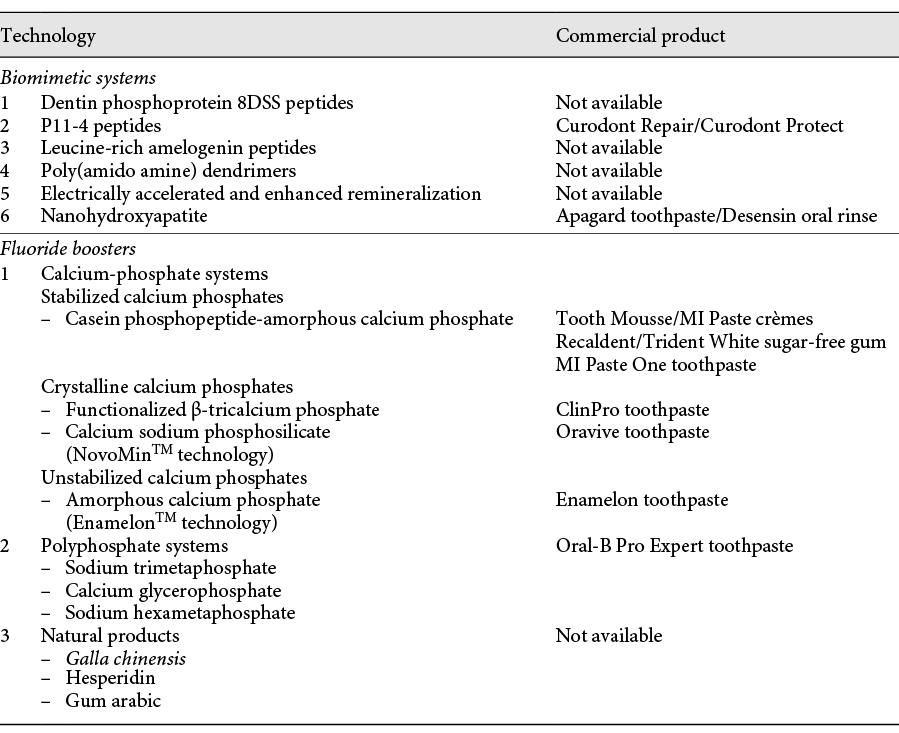나노 하이드록시아파타이트는..
나노기술로 만든 치아의 결정구조와 거의 같은(biomimetic) 칼슘과 인의 복합체입니다.
즉, 하이드록시아파타이트 입자라고 해서 모두 같은 것은 아니라는 뜻입니다.
입자가 크면 연마제에 가깝지 조직재생을 유도할 수 있는 생체재료가 아닙니다.
일본 산기사의 나노입자 하이드록시아파타이트는 일본 후생성으로 부터 충치예방물질로 승인 되었으며 초등학교 학생들을 대상으로한 충치예방효과 필드테스트를 포함하여 30년이상 안정적으로 사용된 생체재료입니다.

State of the Art Enamel Remineralization Systems: The Next Frontier in
Caries Management
Philip N.
Caries Res 2019;53:284–295
https://doi.org/10.1159/000493031

Biomimetic Remineralization
Oral care products containing fluoride are effective in
remineralizing enamel but do not have the potential to promote formation of
organized apatite crystals [Ruan and Moradian-Oldak, 2015]. Presently, there is
an attempt to shift from reparative to regenerative biomineralization
therapies, wherein diseased dental tissues are replaced with biologically
similar tissues [Alkilzy et al., 2018b]. Enamel regeneration is however
particularly challenging as mature enamel is acellular and does not resorb or
remodel itself unlike bone or dentine [Moradian-Oldak, 2012]. Advances in
tissue engineering methods have yielded biomimetic methods that have
demonstrated a strong potential for regenerating the hierarchical enamel
microstructure.
Nanohydroxyapatite
Synthetic nanohydroxyapatite (nHA) is considered one of
the most biocompatible and bioactive materials having similar morphology,
structure, and crystallinity to the apatite crystal within enamel [Hanning and
Hanning, 2010]. The nano-sized particles can strongly bind to enamel surfaces
and with fragments of plaque and bacteria. The small size of the particles that
compose nHA considerably increase its surface area for binding as well as
allowing it to act as a filler to repair small holes and depressions on the enamel
surface [Pepla et al., 2014]. In vitro dynamic pH-cycling experiments have
shown that nHA had the potential to remineralize initial enamel lesions with a
comparable or even superior efficacy to that of fluoride [Huang et al., 2009,
2011; Najibfard et al., 2011; Tschoppe et al., 2011]. Another in vitro study
found that nHA gel had significant potential for enamel remineralization around
restoration margins [Juntavee et al., 2018]. The mechanism of nHA biomimetic
function is not clear with some researchers suggesting that it promotes
remineralization through the creation of a new layer of synthetic enamel around
the tooth or by depositing apatite nanoparticles in the enamel defects [Li et
al., 2008; Pepla et al., 2014]. However, others have proposed that nHA acts as
calcium phosphate reservoir maintaining a state of supersaturation with respect
to enamel minerals, thereby inhibiting demineralization and enhancing
remineralization [Huang et al., 2011].
Although nHA products have been available since the
1980s, there are as yet no well-designed RCTs that prove its superior efficacy
to fluoride toothpastes. Moreover, under neutral conditions, nHA is seen to
promote preferential remineralization of the outer enamel caries lesion, with
full remineralization of the lesion not observed [Huang et al., 2011]. Further
evidence is required before clinicians can recommend nHA oral products as a
substitute to fluoride dentifrices or mouthwashes.

